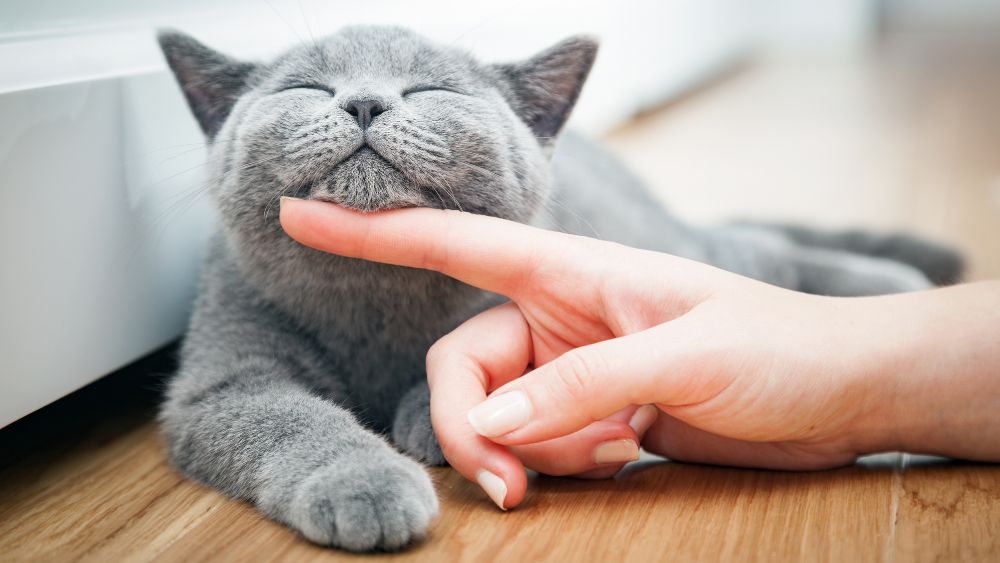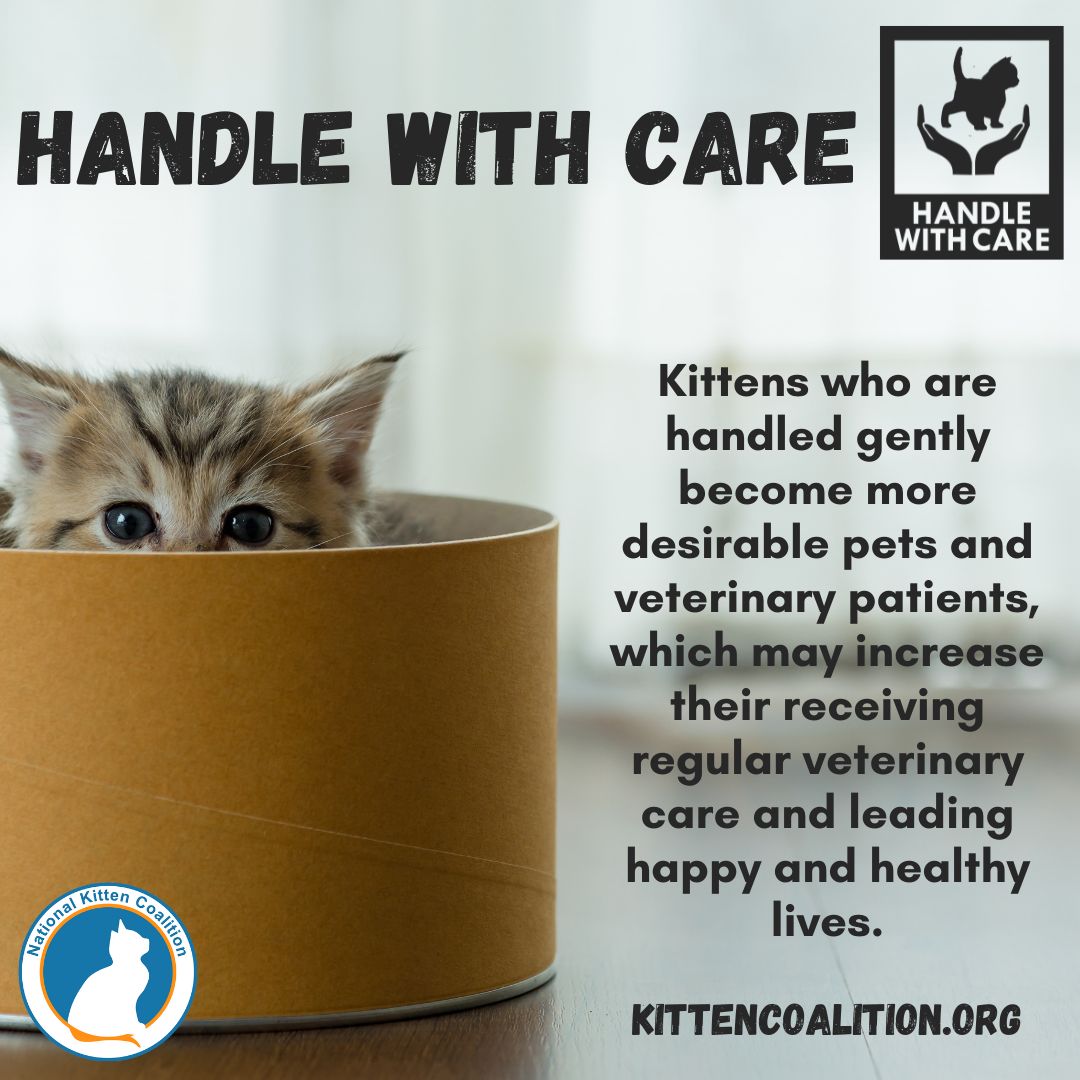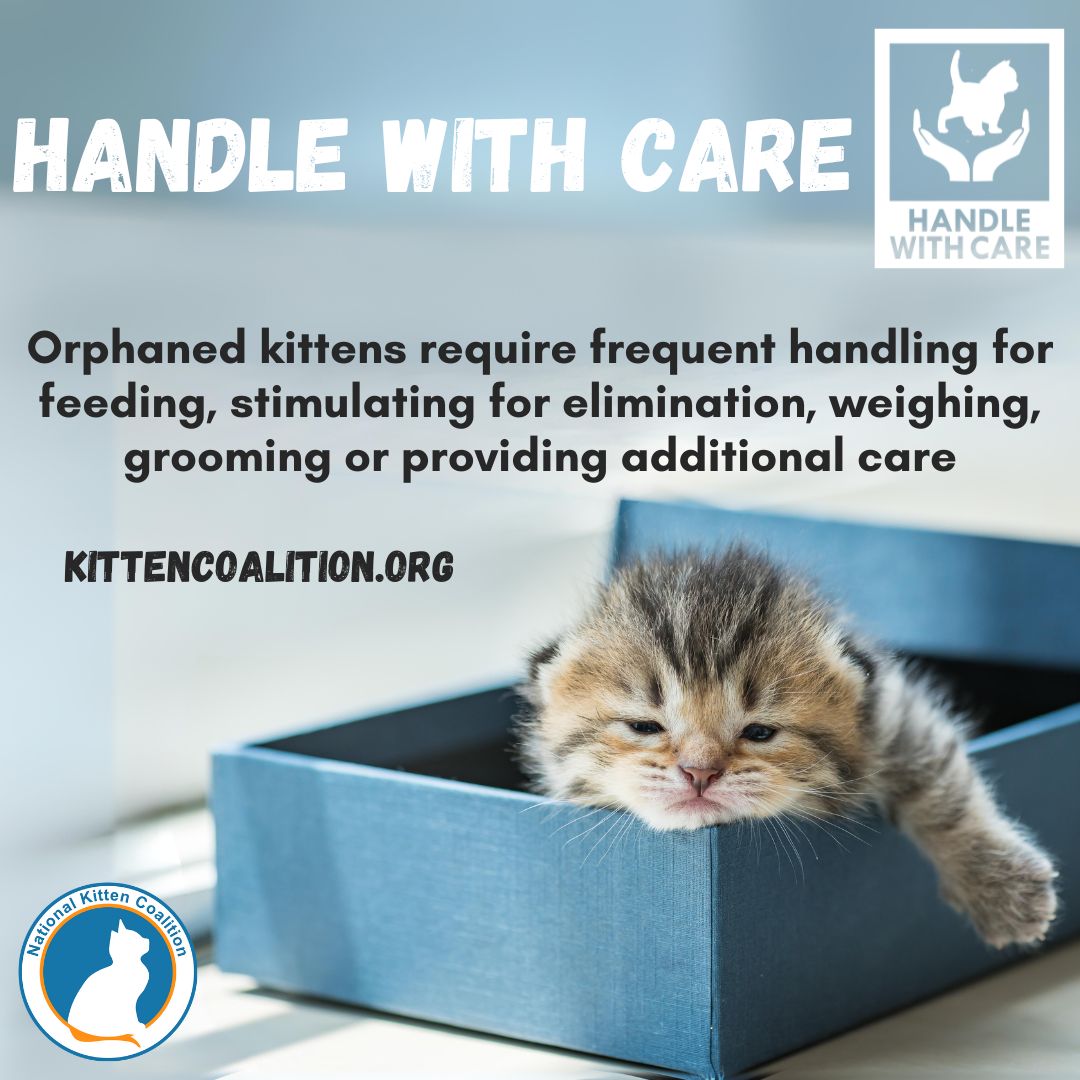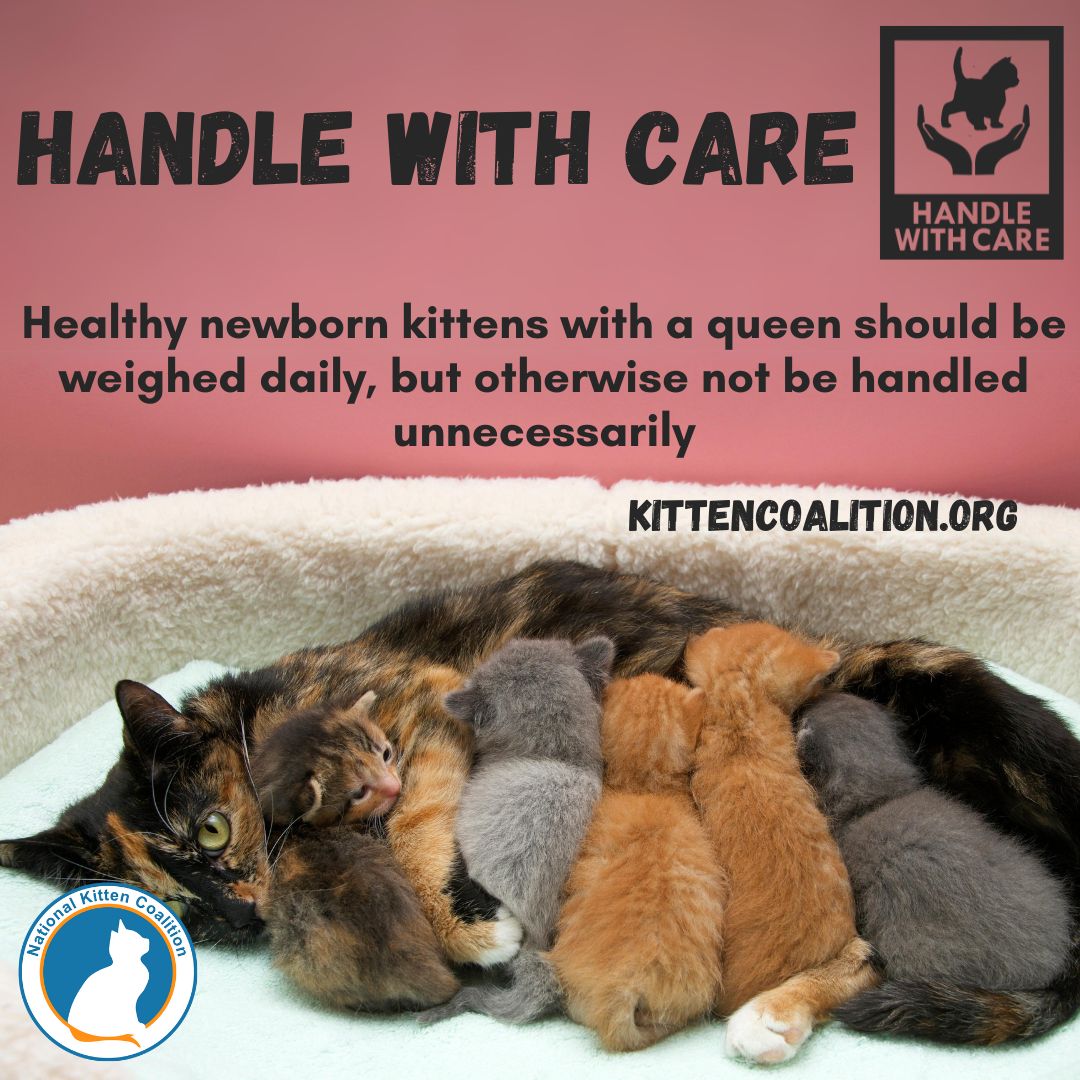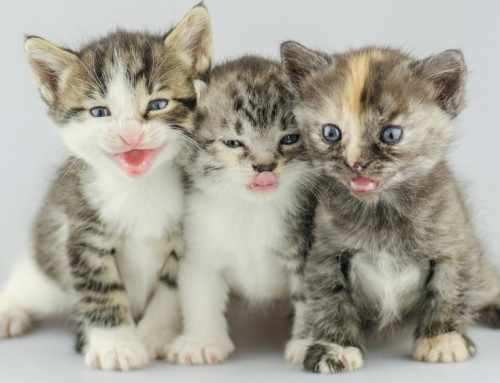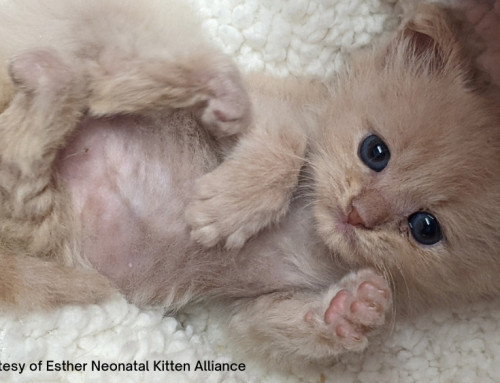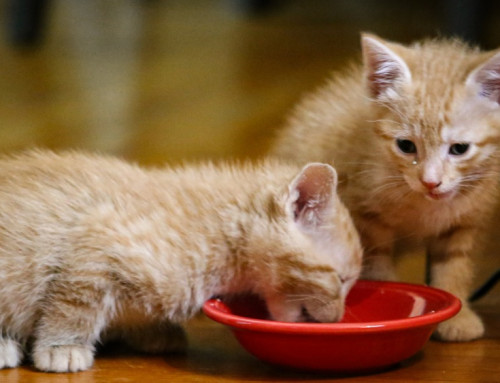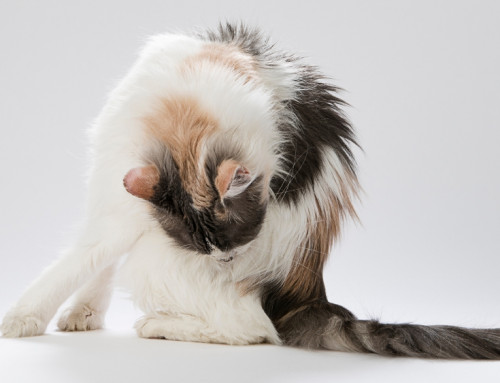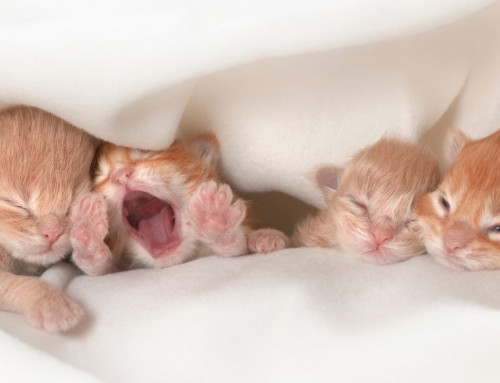Share this resource or email it to a friend!
The Importance of Gentle Handling
Felines of all ages should be handled gently, carefully and respectfully, and kittenhood is the ideal time to introduce gentle handling. Fosters play an important role in preparing kittens to be comfortable being handled by different people, including staff and volunteers in animal shelters and rescue organizations, adoptive families, veterinary professionals, groomers and boarding facility staff.
When to Handle Kittens
All kittens should receive an initial examination by the animal shelter or rescue organization. In addition, a foster parent should also do an initial examination in order to become familiar with the kitten/s. A caregiver who is independently caring for kittens should do an initial examination as well, and contact a veterinarian with any concerns.
Orphaned kittens require frequent handling, but they should be confined to a safe, warm space while the caregiver is not feeding, stimulating for elimination, weighing, grooming or providing additional care. Healthy newborn kittens with a queen should be weighed daily, but otherwise should not be handled unnecessarily.
During the sensitive period of socialization (approximately 2-7 weeks of age), kittens should be handled every day to accustom them to human contact. Once comfortable with one person, they should be handled during this period by at least four different people. This will help kittens generalize that being handled is a pleasant experience. Kittens who have not received regular, gentle handling by people during this period may remain uneasy all their lives with human contact.
How to Handle Kittens
Most kittens and cats enjoy being touched on the head, cheeks and neck and are most comfortable being petted or groomed with short strokes in the direction of their fur. A soft toothbrush is a nice tool that caregivers can use to mimic the queen’s grooming of her kittens.
Caregivers should also gently handle kittens’ ears, mouth and paws to help prepare them for veterinary examinations, nail trimming, and, if necessary, treatments. A lickable treat may make nail trimming and other experiences a kitten finds unpleasant much more tolerable at home or at the veterinary clinic.
Many kittens, especially those who are unsocialized, do not enjoy, and are actually frightened, if they’re picked up and held. It’s a form of restraint that causes them to lose control. Kittens may bite, scratch and/or exhibit other undesirable behaviors when restrained. With careful handling, caregivers can help kittens enjoy being picked up and held.
For example, the first time a kitten is picked up should be brief. Lifting just a bit off the floor and moving the kitten a very short distance from one food bowl to another may help create a positive association with being picked up and held. Increase the height and distance gradually, and always support the kitten properly with hands on both sides of the body or one hand under their chest/front area and the other hand under the back feet/tail.
How to Play with Kittens
Play is an important way for kittens to discharge excess energy, build muscles and learn the boundaries of their behavior with their littermates. Caregivers who play with their kittens, especially single kittens, also strengthen the human-animal bond.
When playing with kittens, avoid using fingers, hands or feet in order not to teach them that pouncing, biting and scratching people is acceptable behavior. Use wand-type toys that keep human extremities far from kittens’ sharp teeth and nails. To avoid being bitten or scratched, don’t insist on handling kittens who are fearful, anxious, stressed or overexcited/overstimulated.
Children and Kittens
Here are some actions to take to keep children and kittens safe:
- Read picture books to children to show them how to be safe and considerate with pets
- Model safe handling, establish rules for interacting with kittens and supervise children and kittens
- Have young children sit on the floor to hold kittens so the kittens aren’t injured
- Teach children to recognize behaviors that indicate that kittens don’t want to interact
- Create a feline-only safe space where kittens can get away from children
- Purchase interactive toys, such as wand-type toys, that keep hands far from excited kitten nails and teeth
Unacceptable Kitten Handling Techniques
Kittens and cats of any age should not be handled roughly, hit, squirted with water, chased or verbally reprimanded. Such actions will stress them and erode their trust in people. They should not be scruffed (picked up and suspended by the loose skin at the back of the neck) by people. Although a queen does scruff kittens in order to move them, it’s only to carry them up to their first two months of age. During that time, the flexor reflex causes kittens to go completely limp and draw up their rear legs. Thereafter, inappropriate scruffing can cause pain and distress.
Flooding is a controversial technique which involves prolonged exposure to an unpleasant stimulus with the hope that an animal finally stops an undesirable behavior, such as struggling when being held. Flooding is stressful and can cause an animal to have a more fearful response or shut down. Flooding is not recommended.
How to Choose a Veterinarian for Kittens
Consider a veterinary facility with staff that uses Cat Friendly® or Fear Free® techniques. They have specific training to recognize when they may need to change their handling technique. They may even postpone nonurgent treatment if an animal becomes stressed and send home medication to be given prior to the next veterinary visit. If a treatment cannot be postponed, they may recommend sedation.
As a caregiver, don’t be afraid to inform staff at the veterinary clinic, animal shelter, rescue organization, grooming or boarding facility of a foster’s or pet’s handling preferences, and advocate for gentle handling. Take treats with you to distract kittens, for example, during examinations, treatments and nail trims.
Kittens who are handled with care become more desirable pets and better veterinary patients. Well adjusted and easily handled cats are more likely to receive regular veterinary care and lead happy and healthy lives.

